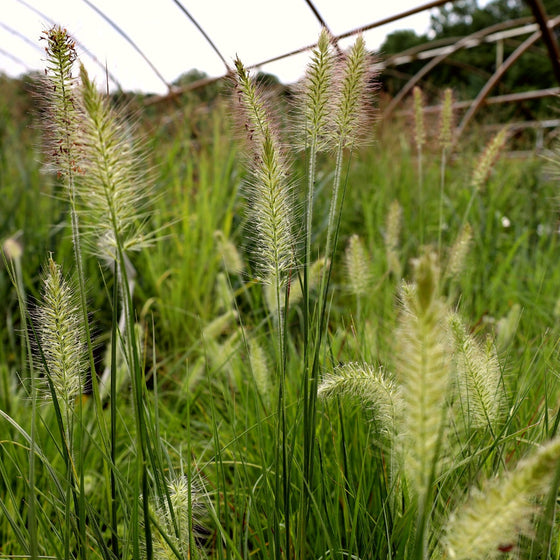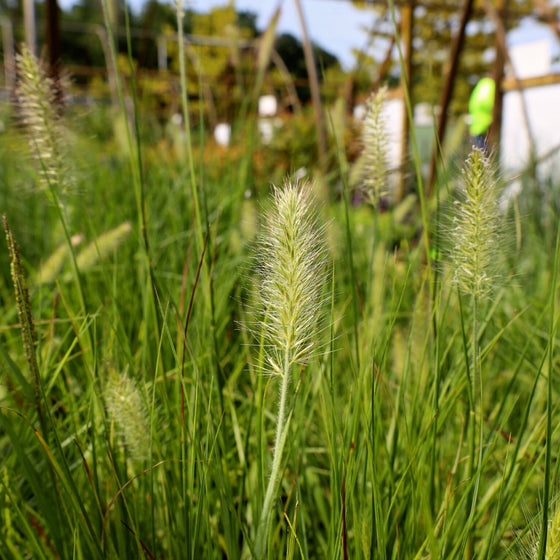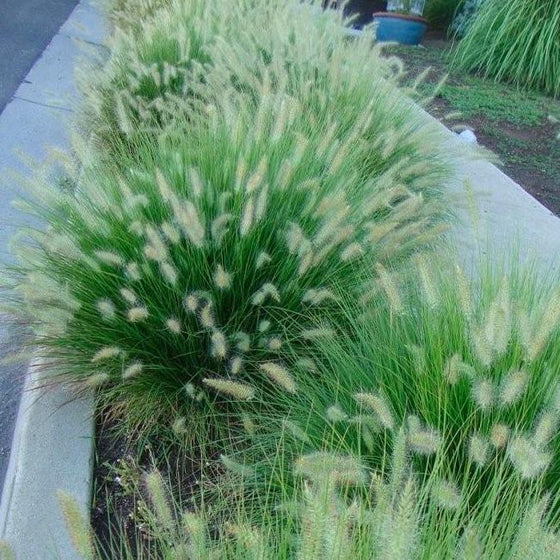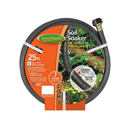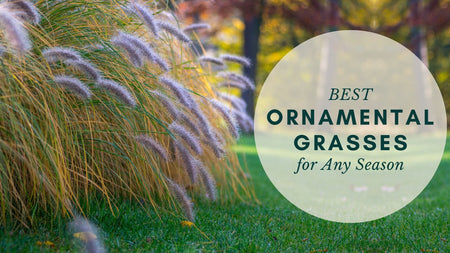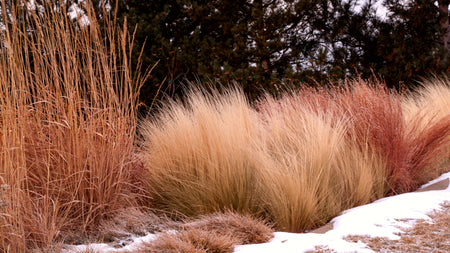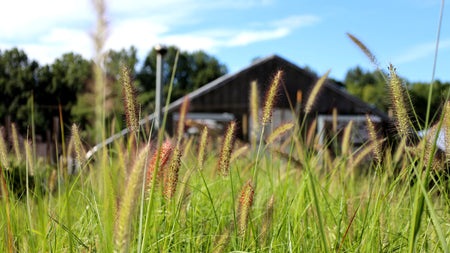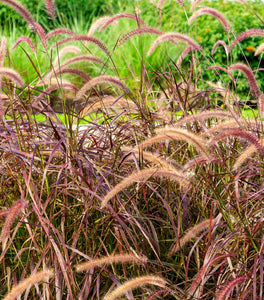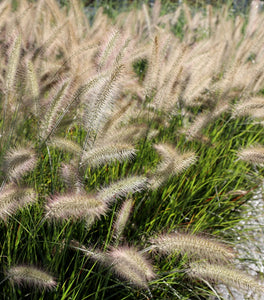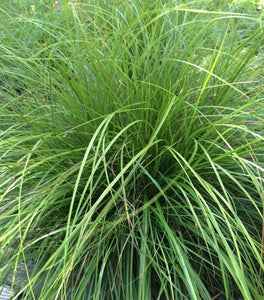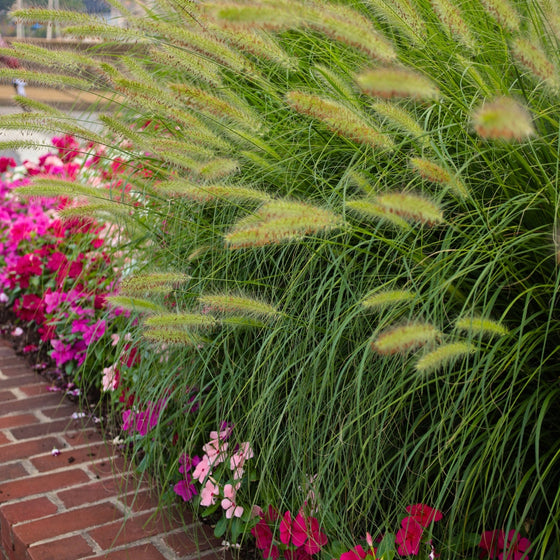
Images Depict Mature Plants
Pennisetum Little Bunny for Sale Online
Pennisetum 'Little Bunny' is a compact ornamental grass known for its charming, fluffy, cream-colored plumes and delicate, arching green foliage. As the smallest fountain grass, it thrives in USDA Hardiness Zones 5-9, growing only 12-18 inches tall and wide, making it perfect for small garden spaces, borders, or container plantings. In late summer to early fall, 'Little Bunny' produces soft, bunny-tail-like flower spikes that add texture, movement, and a whimsical touch to the landscape. Its compact size and low-maintenance nature make it a favorite choice for gardeners looking for a versatile ornamental grass.
This dwarf fountain grass is ideal for rock gardens, along pathways, or in mixed perennial beds, where its soft, airy plumes can provide a contrast to flowering plants. Once established, its drought-tolerant nature and ability to thrive in full sun with well-drained soil make it an excellent choice for low-maintenance landscapes. In addition to its aesthetic appeal, Pennisetum 'Little Bunny' attracts birds and pollinators, enhancing the ecological value of your garden while adding year-round interest with its vibrant green foliage and fluffy flower heads.
Pennisetum 'Little Bunny' is also deer-resistant and adaptable, making it an excellent option for both formal and naturalistic gardens. It requires minimal care, needing only occasional watering during dry periods and light pruning in early spring to remove dead foliage. Whether used in containers, borders, or as a ground cover, 'Little Bunny' brings a delightful charm and texture to any garden setting with its compact form and soft, eye-catching plumes.
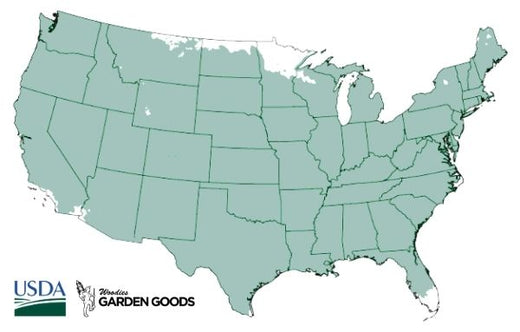
| Hardiness Zone: | 5-9 |
|---|---|
| Mature Height: | 10 to 12 Inches |
| Mature Width: | 10 to 12 Inches |
| Classification: | Warm season ornamental grass |
| Sunlight: | Full sun to part shade |
| Habit: | Clump forming |
| Foliage: | cream, rustic orange (in the fall) |
| Soil Condition: | Prefers average soil, alkaline |
| Water Requirements: | Water well until established |
| Uses: | Drought tolerant, ground cover, water gardens, stream beds |
How to Care for Pennisetum Little Bunny
Before you buy a Pennisetum Little Bunny, be sure to read about the recommended care instructions to ensure your plant stays happy and healthy for years to come!
How Do I Plant Pennisetum Little Bunny?
To plant Pennisetum 'Little Bunny', start by selecting a location that offers full sun to partial shade, as this compact ornamental grass thrives best in bright light. 'Little Bunny' prefers well-drained soil but can adapt to various soil types, including sandy and loamy conditions. Begin by loosening the soil to a depth of about 6-8 inches, then dig a hole that is wide enough to accommodate the root ball. Place the plant in the hole, ensuring the top of the root ball is level with the surrounding soil. Gently backfill with soil, firm it down to eliminate air pockets, and water thoroughly to help the roots settle. When planting multiple Pennisetum 'Little Bunny' plants for a border or ground cover, space them about 12-18 inches apart to allow room for the grass to grow and fill in the area. This spacing ensures good air circulation and prevents overcrowding as the plants mature. After planting, water regularly during the first growing season to help the plants establish a strong root system. Applying a layer of mulch around the base of the plant will help retain moisture and reduce weed competition. Once established, 'Little Bunny' is drought-tolerant and requires minimal care, making it an excellent choice for low-maintenance landscapes.
How Do I water Pennisetum Little Bunny?
Watering Pennisetum 'Little Bunny' properly is essential to help it establish strong roots and maintain healthy growth. During the first growing season, keep the soil consistently moist by watering deeply once or twice a week, depending on weather conditions. Make sure to water at the base of the plant to avoid wetting the foliage, which can reduce the risk of fungal diseases. The goal is to ensure the top 2-3 inches of soil stay moist, but be careful not to overwater, as Pennisetum 'Little Bunny' prefers well-drained soil and can be susceptible to root rot in overly wet conditions. Once established, Pennisetum 'Little Bunny' becomes more drought-tolerant and requires less frequent watering. During dry periods or hot summer months, check the soil moisture regularly, and water when the top inch of soil feels dry to the touch. If you're growing 'Little Bunny' in containers, you'll need to water more frequently, as containers tend to dry out faster than garden beds. Adding a layer of mulch around the base of the plant helps retain moisture and keep the soil cool, reducing the need for frequent watering. Proper watering will ensure this compact ornamental grass thrives and maintains its soft, fluffy plumes and vibrant green foliage.
How Do I Fertilize Pennisetum Little Bunny?
To fertilize Pennisetum 'Little Bunny', start by applying a balanced, slow-release fertilizer, such as a 10-10-10 formula, in early spring as new growth begins to emerge. Spread the fertilizer evenly around the base of the plant, but avoid placing it too close to the crown to prevent fertilizer burn. Water the area thoroughly after applying the fertilizer to help the nutrients reach the roots and promote healthy growth. This spring feeding gives 'Little Bunny' the essential nutrients it needs to produce its vibrant green foliage and soft, fluffy plumes throughout the growing season. For ongoing maintenance, you can supplement with compost or organic matter, which enriches the soil and provides a slow-release source of nutrients throughout the year. Avoid over-fertilizing, as too much fertilizer can lead to excessive foliage growth at the expense of flowering and may make the plant more vulnerable to pests or diseases. Pennisetum 'Little Bunny' is naturally low-maintenance and typically doesn’t require heavy fertilization, so a light annual feeding is sufficient to keep it healthy and thriving. With proper fertilization, this dwarf ornamental grass will continue to add texture, movement, and charm to your landscape or containers.

How Do I Plune Pennisetum Little Bunny?
Pruning Pennisetum 'Little Bunny' is a simple process that helps maintain its tidy appearance and encourages healthy new growth. The best time to prune this ornamental grass is in late winter or early spring, before new growth begins. Using clean, sharp pruning shears, cut back the old foliage to about 2-3 inches above the ground. This removes the dead leaves and spent plumes from the previous season and makes room for fresh growth. Pruning at the right time ensures that 'Little Bunny' will produce its signature soft, fluffy plumes and vibrant green foliage when the growing season starts. Throughout the growing season, you can also perform light pruning to remove any damaged or dead leaves, helping the plant stay neat and healthy. Pennisetum 'Little Bunny' is a low-maintenance grass, so it doesn’t require frequent pruning, but removing old growth annually is key to its overall vigor. Avoid cutting the grass back during fall or early winter, as this can expose the crown to cold temperatures. With proper pruning, your Pennisetum 'Little Bunny' will continue to provide year-round interest, adding texture, movement, and charm to your landscape.

